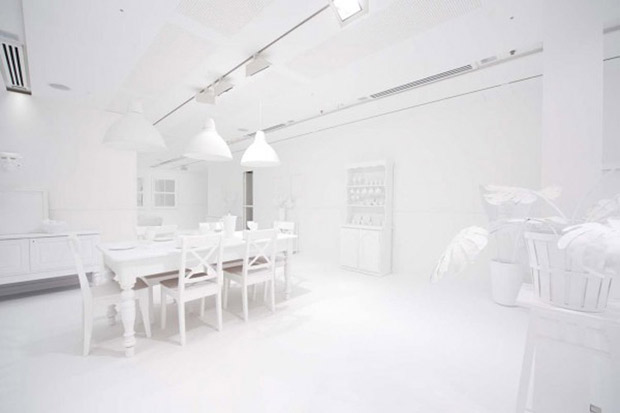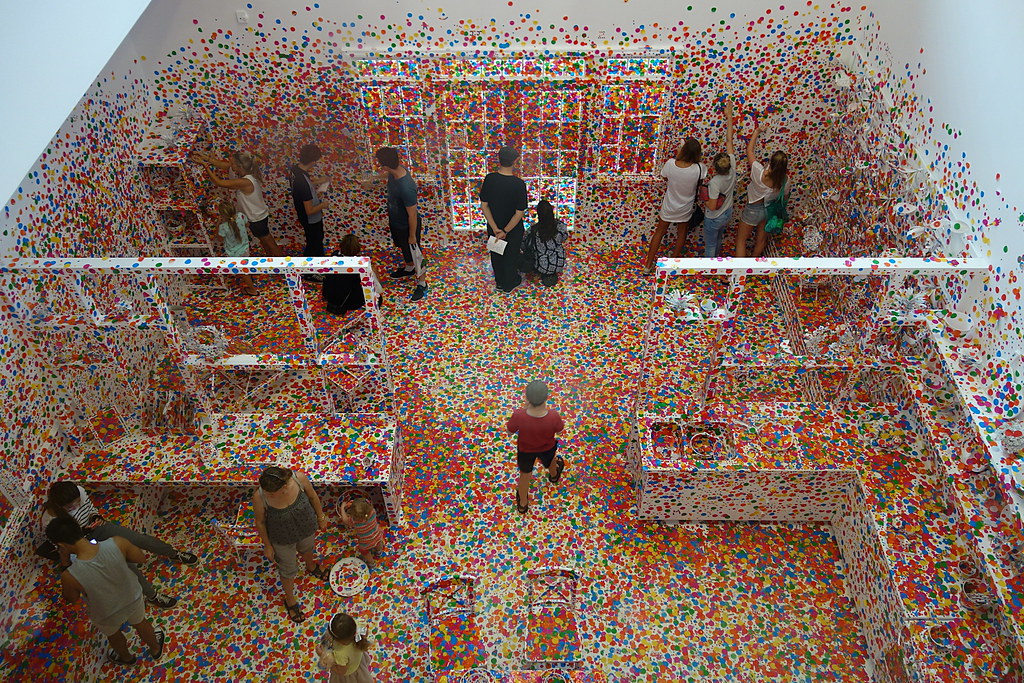

In 1968, for example, Kusama staged a demonstration against the Vietnam War which involved the artist painting the bodies of performers at the New York Stock Exchange. While Kusama is today an art-market star, with paintings reliably selling for millions of dollars, her early works often engaged with communal gatherings that mixed politics with art happenings-and which could not be collected. Photo: Jahi Chikwendiu/The Washington Post via Getty Images. The Furniture and Objects in Each Room Are Locally DonatedĪnna Tulchinskaya leaps to apply the absolute last dot to on the final day of the “Yayoi Kusama: Infinity Mirrors” exhibition at the Smithsonian Institute’s Hirshhorn Museum, 2017. Many of her projects attempt to capture an imagined, idealized youth, perhaps most directly in. The artist has recalled her own childhood as marked by repression and disciplinarian rules. As for the title, the artist further explained, “I felt as if I had begun to self-obliterate, to revolve in the infinity of endless time and the absoluteness of space.” Interestingly, Kusama conceived of the installation not as an artwork for adults, but as a project for children visiting Australia’s Queensland Art Gallery in 2002. “One day I was looking at the red flower patterns of the tablecloth on a table, and when I looked up I saw the same pattern covering the ceiling, the windows, and the walls, and finally all over the room, my body, and the universe,” she explained. The artist says that her famed polka dots were first inspired by a childhood hallucination she experienced while looking at a tablecloth in her family home. No symbol is more synonymous with Kusama than her dots, and while a polka dot may seem like a lighthearted graphic motif, for the artist the mark alludes directly to deeply personal, even overwhelming experiences.

Her Polka Dots Were Inspired By a Childhood VisionĪ 360-degree internal view of, by Japanese artist Yayoi Kusama, at the Hirshhorn Museum and Sculpture Garden in 2017. On the 20th anniversary of the first, we found three facts that might just change the way you this playful, and perhaps even poignant, project. The blockbuster 2017 exhibition “Yayoi Kusama: Infinity Rooms” at the Hirshhorn Museum and Sculpture Garden brought in hundreds of thousands of visitors, and over the run of the exhibition, itself garnered more than 800,000 stickers of color.īut the colorful work is more complex than one might imagine. As part of the installation, visitors are given a sheet of colorful dots of various sizes and shades and encouraged to place the stickers wherever they like. The installation, which Kusama debuted in 2002, has been a hit with viewers for some 20 years.

These time-based kaleidoscopic conversions are the hallmark of Yayoi Kusama’s, one of the Japanese artist’s most famous installations-and one of her most directly participatory since the earliest days of her career.

Now imagine that space transforming, one colorful dot by brilliantly colorful dot, over the course of days and weeks into a kind of living Pointillist environment so reverberatingly colorful that the eye bounces from one wall to the next. Picture this: a pristinely, even glaringly white room, filled with white chairs, white tables, white cabinets, and even white light fixtures.


 0 kommentar(er)
0 kommentar(er)
